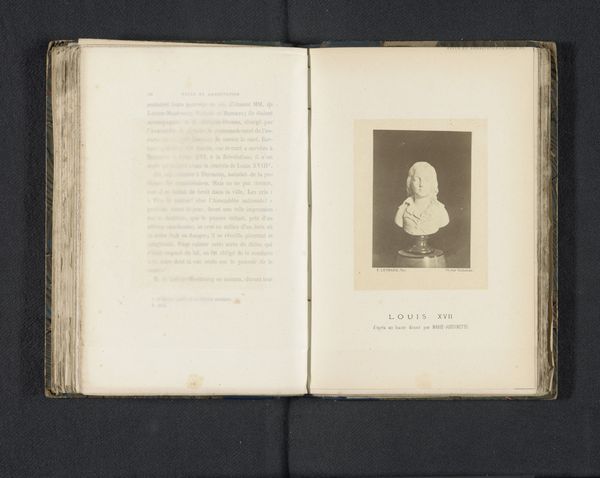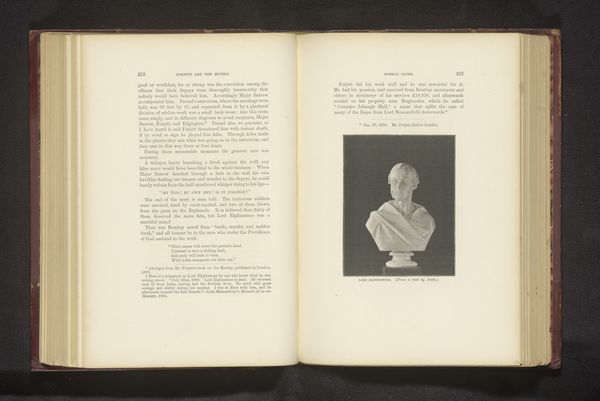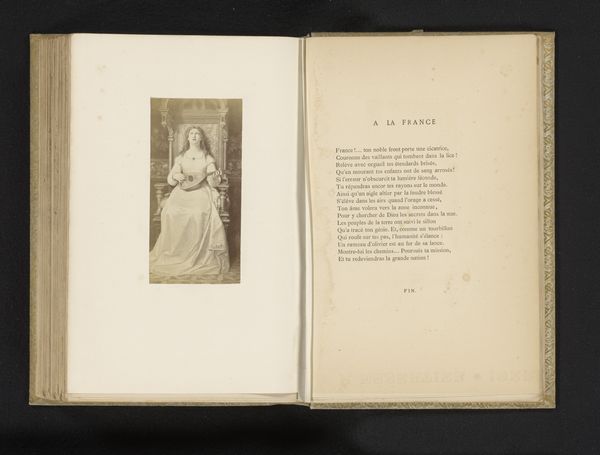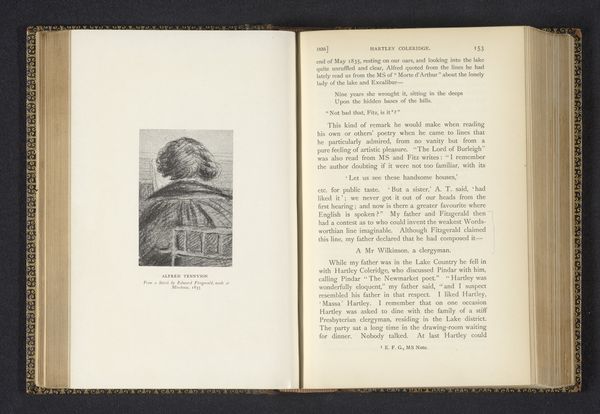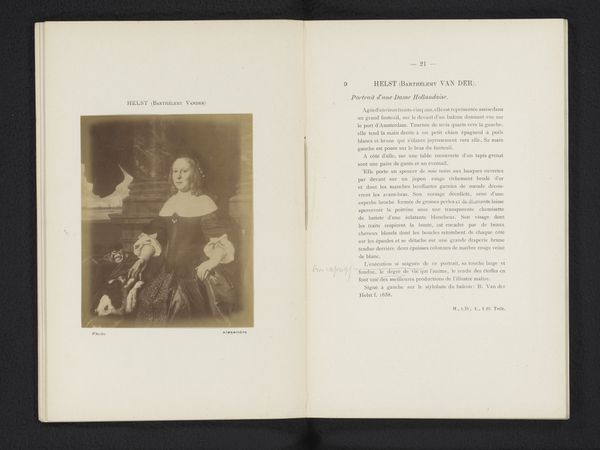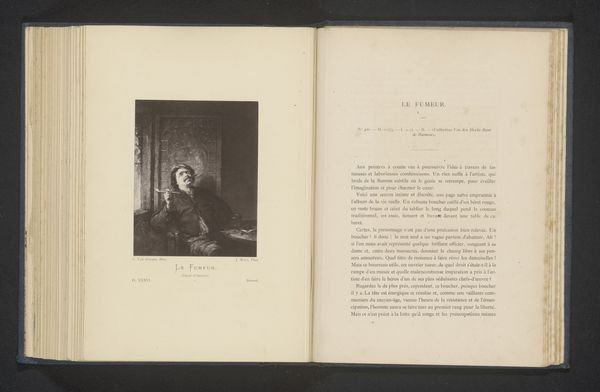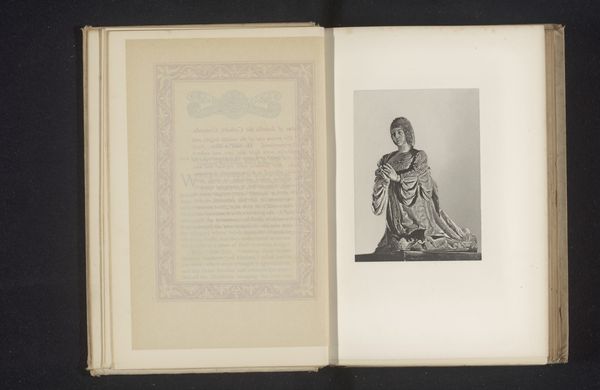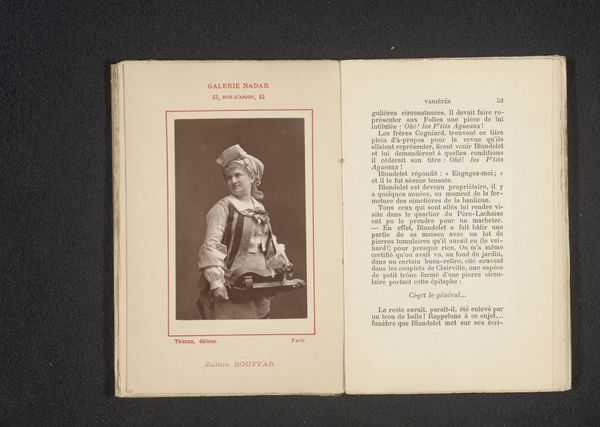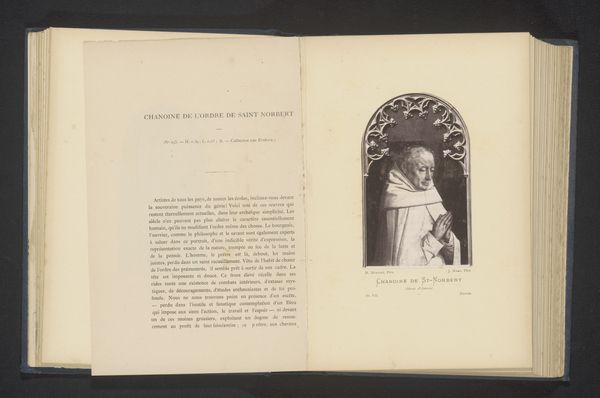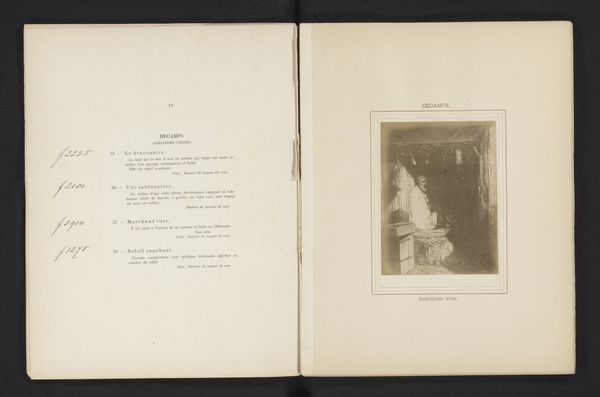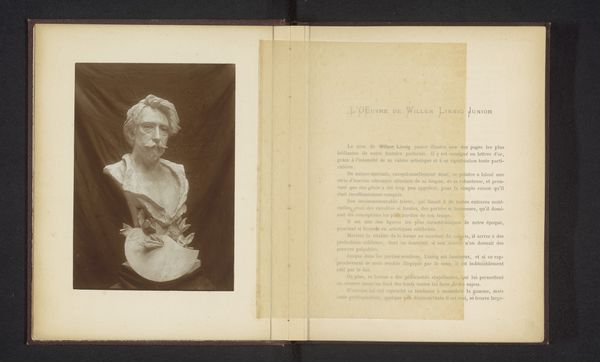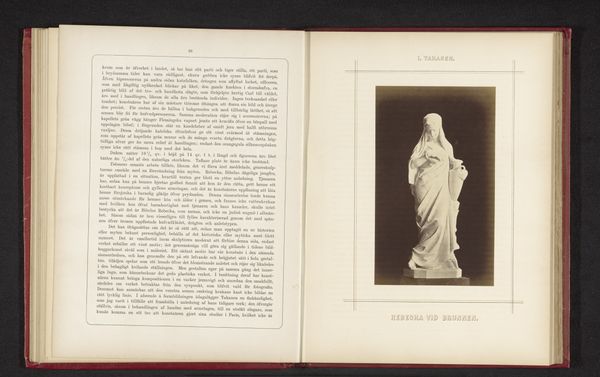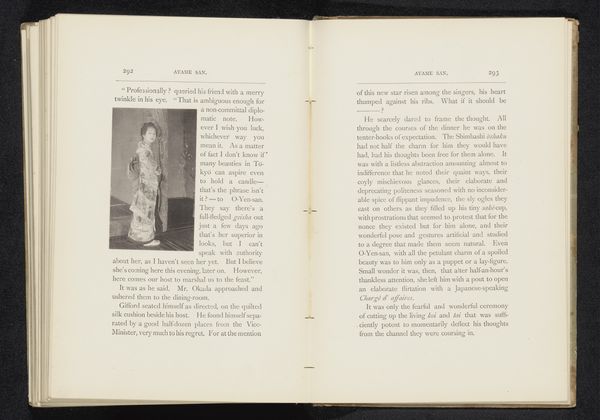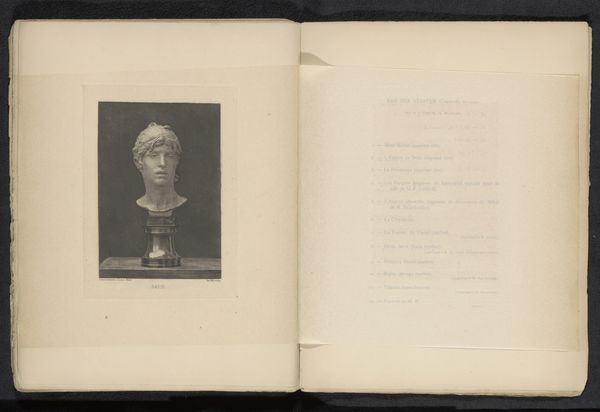
Dimensions: height 90 mm, width 63 mm
Copyright: Rijks Museum: Open Domain
Curator: Before us, we have a photographic print depicting the bust of Louis XVII, King of France, dating back to before 1866. It's a fascinating example of how sculpture intersects with print media. What strikes you first about this image? Editor: The stark lighting, and the classical, almost severe stillness it conveys. There's an austerity to the portrayal that hints at both power and vulnerability. It gives me a melancholic vibe overall. Curator: Indeed, that interplay is potent. Considering the historical context, particularly the upheaval of the French Revolution and Louis XVII’s tragic life, the Neoclassical style takes on an additional layer of meaning. It hearkens back to ideals of order and reason while also documenting an artifact of a tumultuous past. Editor: Precisely. And, from a materialist perspective, we have to consider the process. This image represents several acts of creation and labor. First, the sculptor works with marble to realize the king's image, and then someone captures it in print form, using developing processes now obsolete. We are twice removed from the actual subject, through artistic interventions. It's an echo of royalty through material practice. Curator: An echo shaped by meticulous choices. The clean lines, the careful modeling of light and shadow on the face—these formal decisions speak volumes about the artist’s intent, shaping the viewer’s interpretation. Note the symmetry in the work, interrupted by details in the robe that feel vital to the work overall. Editor: And considering the original material - presumably marble- we can speculate about the access and labor required to produce such work. Royalty literally shapes the landscape, requiring significant material resources for constructing and disseminating propaganda. Curator: Ultimately, it's an image deeply rooted in history, filtered through various artistic practices, each imbued with its own meaning. Editor: Right, and thinking about its materials and contexts allows us to remember history not only through monarchs and grand styles but also by the less privileged labors required to construct this piece and ultimately, this idea.
Comments
No comments
Be the first to comment and join the conversation on the ultimate creative platform.
